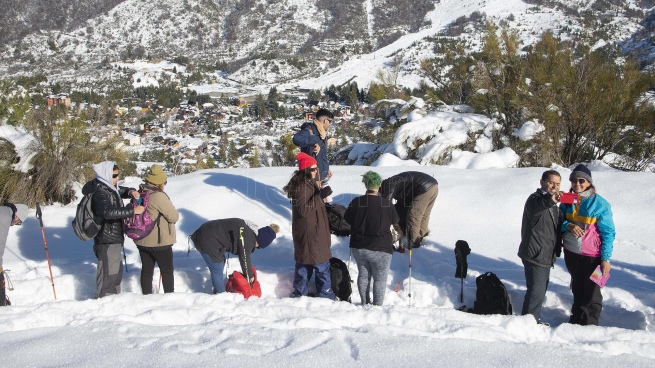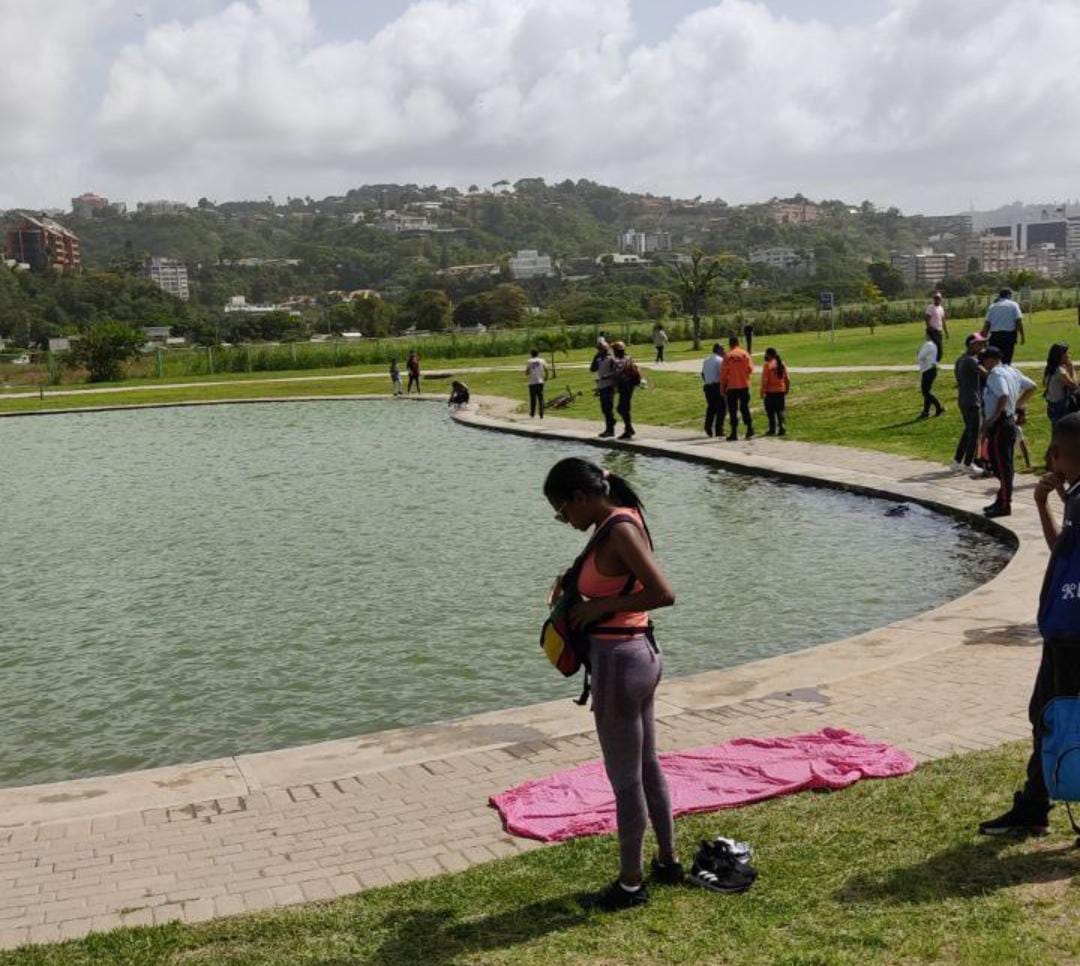The project “Lets go to the mountain”, which aims to families from the vulnerable neighborhoods of Alto de Bariloche enjoy the tourist circuits designed for people who can afford these expenses, completed its third outing.
The initiative arose between a group of mountain guides and the San José Obrero Foundation, of which more than 400 people are part, and has the financial support of the National Secretariat for Children, Adolescents and Family (Senaf) to cover training, guided and equipment expenses.
At the top of the San Martín hill, also known as “el Viejita”, it is celebrated with mates and snowballs that pass from one side to the other.
Jorgelina and Ángela find a snowless hole between the stones and sit down to rest. They met in the hairdressing workshop that they attend together at La Fábrica de Futuro, the school of social management and labor integration of San José Obrero.
“The first time I went up, when we went to the Bell Tower, I thought I wasn’t going to make it, that I didn’t feel like it. During the week, all I do is walk home from school, at most to my mother-in-law’s neighborhood, from Alborada to Nahuel Hue,” says Jorgelina Vera, who was born in Formosa but grew up in Bariloche, where she moved with her family twenty-two years ago.
“I would love for them to get to know these places that are so close to us”he adds and points to a hill, in the distance, that seems familiar to him.
“You can see that from home,” says Jorgelina, who now lives in the Nahuel Hue neighborhood with her four teenage children and her husband and works as a hairdresser and barber at home.
Although he lives a few kilometers from Cerro Ventana, which he looks out from his garden, he never came to meet him. “I can’t think of going to any mountain alone, I’m afraid of losing myself and not being able to return,” she explains.
Before starting the walk, she was stiff and thought about not joining: “I had headaches and cervical pain all week, but now I feel fine,” she says before looking at her friend Angela.
She lives in El Frutillar, another of the Alto neighborhoods of the city, and it is also her first time on the hill. With curiosity, the two join the round where Francisca and Agustina, two of the guides, explain how to recognize the trails and the peaks on a topographic map.
Cerro San Martín, located between the access route to Cerro Catedral and the Villa Los Coihues neighborhood, has a drop of 332 meters from the beginning of the trail and although the ascent is short -about three kilometers-, from the summit You get to see the Nahuel Huapi lake, the Otto hill, the Gutiérrez lake, the Ventana hill and part of the Pampa de Huenuleu where the Alto neighborhoods and the San José Obrero foundation are located.
“To plan the groups we ask each one what level they have, if they do physical activity, and what they feel like doing. We also take into account the history of each person, or if they have any health problems”explained Agustina Iglesias Louis, Conicet researcher and trekking guide.
He specified that the choice of the San Martín hill had to do with the different trails that the mountain has: “There is the road for cars, with less slope and less risk, and the road that goes along the north face of the hill, which is steeper. ”.
In addition to Agustina, Francisca Bonacalza, Lucas Navarro and Nicolás Simari form part of the group of guides.
The paths are open to people over 18 years of age -or minors accompanied by an adult-, the groups are divided into Renault 4, for those who prefer a less demanding ascent, and 4×4, for the more difficult trails.
The previous excursions were in March and April to Cerro Campanario and Cerro Catedral, where half of the group climbed through the lifts, while the other made the ascent on foot.
When Sebastián Fuentes, a physical education teacher, and Matías Fernández, a history teacher and coordinator of workshops at the foundation, started the project, they did not think it would get off to a fast start.
“When I arrived in Bariloche, the first thing I did was go everywhere. Later I started to work in a school and I realized that a large part of the people here did not do it, so I wondered why this was happening, and it happens that the children from Alto do not feel part of the National Park, they see it as something which is for those who come from outside”, said Sebastian.
He related that, when he worked on Cerro Catedral, he had colleagues who, despite being employees of the ski center for more than five years, had never climbed to the summit: “It is a symbolic barrier that shows how all of Bariloche is designed for tourists. or for people who can financially afford these expenses”.
“The uniqueness of this project is that it is the first to link a tourist activity with vulnerable neighborhoods. We were surprised by the geographical proximity between the neighborhoods and the mountain and how far they were from being able to access it,” Mariano Luongo, Undersecretary of Rights for Children, Adolescents and Family, told Télam.
The Activar program of Senaf, within which “Let’s go to the mountain” was framed, has the purpose of accompanying projects for the promotion of rights that arise from the territory where they are going to be carried out.
“There are more than fifty projects throughout the country, but in hiking it is the first and that makes it replicable not only in regions of Patagonia, but also in other provinces,” he assured, adding that “the right to have fun and inhabit the spaces recreation is as important as other rights and we should all be able to access it”.
In Mar del Plata, the Secretariat supports the Escuela de Mar y Playa project, which connects boys and girls from vulnerable neighborhoods of the city with surfing and sports in the sea.
“What we are looking for is that beyond social status, all the boys and girls in the country have the opportunity to inhabit public spaces and be educated in this type of activity, as well as in environmental education, something that is also transversal to the project” Luongo pointed out.
The next departure is scheduled for Cerro Otto, which also has different types of trails with greater and lesser difficulty.
“We have many plans for the future, from articulating with the carpentry workshop to be able to build our own rackets, to setting up a lecture at the foundation so that they can learn to climb,” added Professor Fuentes.











